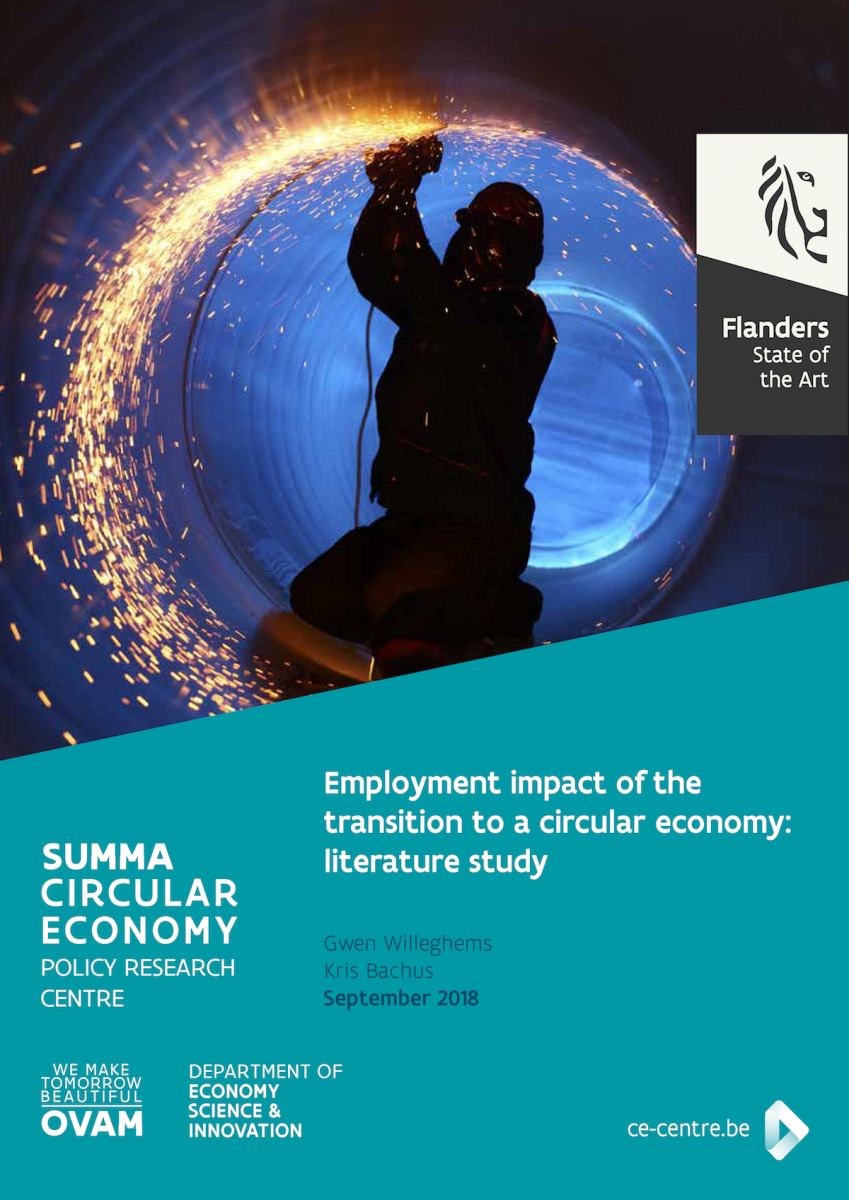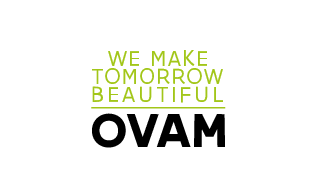3. Employment impact of the transition to a circular economy: literature study
Employment impact of the transition to a circular economy: literature study
Gwen Willeghems, Kris Bachus
September 2018
Framed within the Flemish policy research centre Circular Economy, this research paper is the first output of the research line that studies employment and actor analysis for the circular economy (RL 6).
The objective of this study was to gain insight in how the transition to a more circular economy could impact the labour market, with a focus on net job creation or loss, job creation at different skill levels, and geographical job concentration. The methodology used was a combination of literature review and exploratory data analysis, the latter mainly focused on the Belgian region of Flanders.
As many different definitions exist that describe “circular economy”, a combination of concepts was chosen to investigate the impact on the labour market.
The literature review showed that, when it comes to the quantification of job impacts, different methodologies can be used. Moreover, generally speaking, studies quantifying the job impact of the circular economy forecast a net increase in jobs, although some existing jobs might be lost. Next to quantitative estimates, a number of qualitative estimates have been published on job creation through the transition to a circular economy. More specifically, depending on the type of action contained within the “circular economy”, i.e. reduce, reuse, and recycle, the impacts of a “more circular economy” vary for the different levels of skilled labour (low, medium, high-skilled) and geographical location (local, regional, global). Additionally, while certain existing occupations might be lost, new occupations might be created (job substitution and job creation), or similar changes might occur at the job activity level where some specific tasks might be replaced by others (job transformation). Similar developments occur due to technology changes and robotization. Finally, the impact of circular design and innovation on the labour market depends on the area in which the innovation occurs. Innovation that creates new demand generally generates new employment, while end-of-pipe innovations usually go hand in hand with labour-saving technologies.
Focusing on the labour market characteristics in Flanders, the exploratory data analysis indicated that the group of non-working job seekers is disproportionally made up of low-skilled labour and other vulnerable groups, such as older workers, long-term unemployed, non-natives and people with an occupational disability. Combining this analysis with the results from the literature review, we expect that a transition to a more circular economy will positively affect employment for these vulnerable groups and reduce overall unemployment. Moreover, the transition has the potential to reduce the educational and geographical mismatches currently present in the Flemish labour market. However, the specific impact on vulnerable groups depends on the specific opportunities of the circular economy in Flanders, which might be different from opportunities in other countries and regions. It is also important to not only look at the number of jobs that can be created but also the quality of these jobs. The research that has been conducted so far indicates that some jobs in the waste sector are 'dirty jobs'. More research into working conditions in circular economy jobs is hence needed.


.png)






